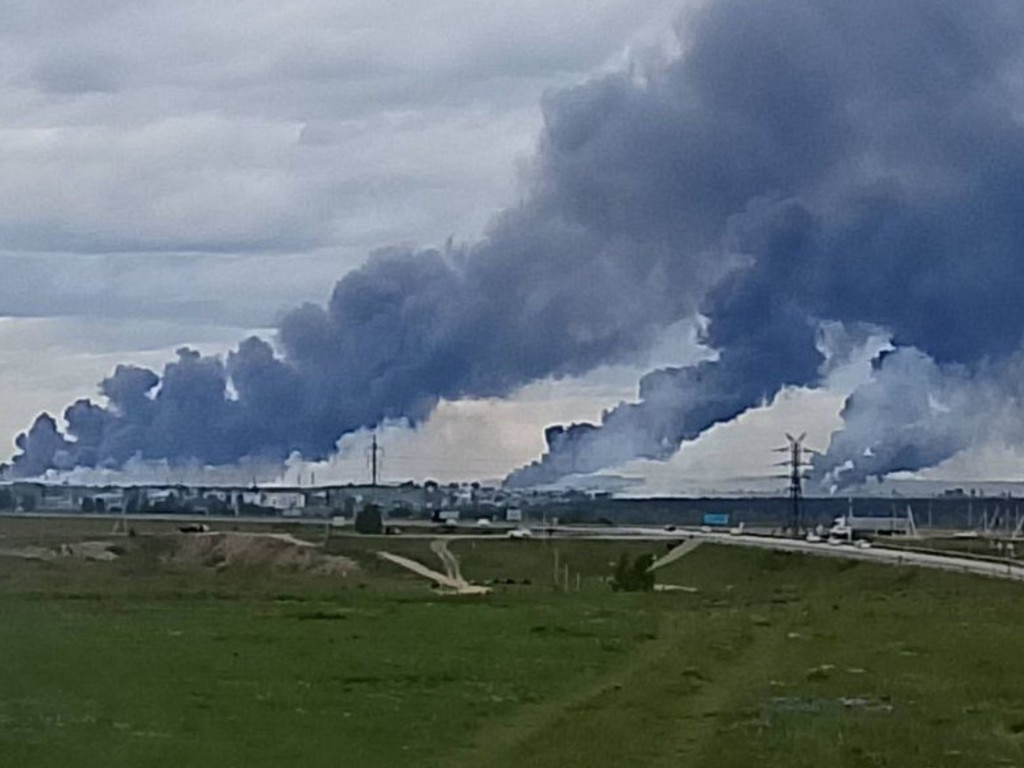Wind blamed as Melbourne's Yarra River Drone Show sees 400 fall from sky
WATCH: The 10-minute drone show was meant to light up the night sky with messages in support of the Matildas. Within 30 seconds it went pear-shaped, with wind causing 400 drones to fall into the river.
Business
Don't miss out on the headlines from Business. Followed categories will be added to My News.
Organisers of a disastrous drone swarm over Melbourne’s Yarra River failed to take into consideration the effect windy conditions would have on the display, resulting in more than 400 drones going rogue and crashing.
The Australian Transport Safety Bureau has delivered its final report on the incident on July 14, 2023, involving a swarm of 500 Damoda Newton 2.2 remotely piloted aircraft operated by the Australian Traffic Network.
The 10-minute display was meant to light up the night sky with messages in support of the Matildas ahead of the Women’s Football World Cup but, within 30 seconds of launching, dozens of drones were out of position.
Two minutes later just seven aircraft were attempting to continue the show as the rest “flew away”, with many colliding, 11 breaching the event’s safety boundary and hundreds of others crashing into the water.

A total of 427 aircraft ended up in the Yarra River, of which 236 were recovered by divers contracted by the operator the following day.
The ATSB report found the remote pilot-in-command launched the show with the wind speed close to the limit of the drones, and aware that conditions over the river were likely to be worse than those on the ground.
In addition, the flight crew did not use a weather drone to conduct a wind check at show altitude, which meant the remote pilot-in-command did not have accurate information about the conditions.
“Shortly after starting the transition into the show area, the swarm encountered wind conditions that were more than double the published capability of the aircraft,” the ATSB report said.
“This led to multiple aircraft being unable to hold position, with at least 11 breaching the geofence, multiple collisions and most aircraft descending into the water.”
It was acknowledged that the remote pilot-in-command felt “a higher than normal level of pressure for the show to go ahead”.
“This, combined with a higher than normal workload, contributed to the decision to launch the show into unknown wind conditions,” the report said.

ATSB Chief Commissioner Angus Mitchell said the incident demonstrated the importance of drone pilots being familiar with all functionality and data provided by relevant ground control software.
“It also shows the impact human factors can have on drone operations, and how they should be actively considered and managed,” Mr Mitchell said.
The Australian Traffic Network had advised the ATSB that since the incident several changes had been made to its show planning and conduct processes.
These included changes to crewing requirements to have two CASA-approved pilots operating every show and the establishment of multiple “no-go” points during the launch sequence to allow for more clearly defined stop points.
Safety recommendations were also made to drone manufacturer Damoda after it was found the aircraft’s computer software could not alert pilots to wind speed exceedances.
Damoda has advised it is considering an update to allow such alerts.
More Coverage
Originally published as Wind blamed as Melbourne's Yarra River Drone Show sees 400 fall from sky





